Table of Contents
Summary
» Country? Thailand.
» In a few words, what is the idea? This historical place is located in a rural setting with a calm atmosphere so that is conducive to experience with all five senses.
» Duration? At least one day, sleeping in the Historical Park surroundings the previous night.
» For whom? Travellers with a slower pace of travel, also for enthusiasts of Buddhist monasteries and ambience and, finally, for people interested in Thai culture.
» Where? Sukhothai Historical Park.
» When? All year long.
Description
Introduction to Sukhothai
Sukhothai was the capital of the very early Kingdom of the current Thais in the thirteenth century AD.
It arose in the region due not so much to its military strength as to the ability of its leaders to build alliances at a time when the great empires had ceased to wield their command.
The cultural legacy of this period is extraordinarily rich and here in Sukhothai, that footprint is even more profound. The city name means ‘the Dawn of Happiness’.
The place is profuse in remains, so depending on the time and your personal interests you will have to make a selection. Here we include those that we consider essentials.
Click here to place Sukhothai in the timeline (Open link in a new tab, website enjoythailand.fun).
The Sukhothai Historical Park, which has been declared a UNESCO World Heritage Site, lies 265 miles or 427 km north of Bangkok on the road to Chiang Mai.
To get an idea about its size, if we place Sukhothai within a circle, during the visit you will move in a diameter of approximately 3.1 miles or 5 km.
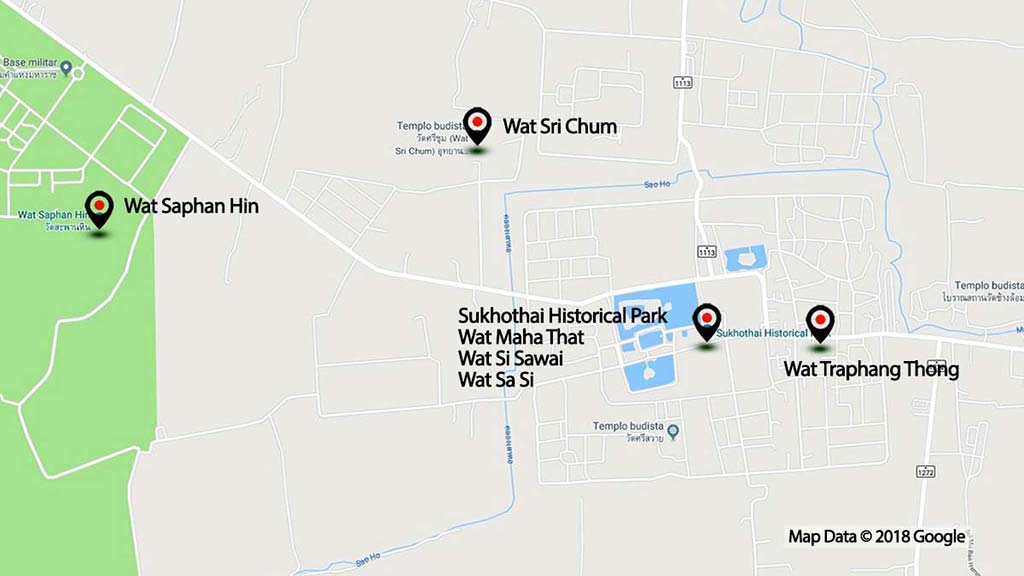
References for distances.
Sukhothai Historical Park – Wat Saphan Hin: 3,8 Km / 2,4 miles.
Sukhothai Historical Park – Wat Si Chum: 2,7 km / 1,7 miles.
The itinerary you choose will depend on the time you have available. But if you are able to spend a whole day here, for example, then essentially there are two options open to you on your visit. If your priority is to indulge your senses, soaking up the historical ambience and natural surroundings, the best option is to choose 4 or 5 temples and hire a bicycle to tour them without trying to get around the whole park.
On the other hand, if you want to tour a variety of interesting sites and get a sense of the whole of the former capital city you can hire a moped, car or tuk-tuk.
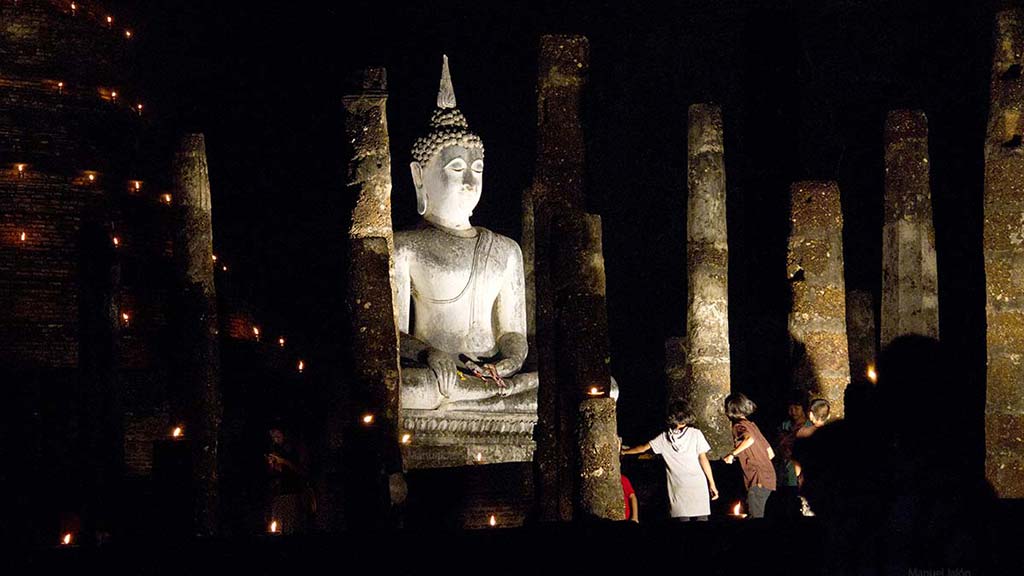
Back in the 13th century, the Thai peoples who had migrated here from China gradually settled in the Chao Phraya river basin. Meanwhile, the presence of the Khmer Empire of Angkor diminished to the point that in 1238 King Indratit was able to declare a new independent state.
The city’s cultural development was influenced by different factors, such as the art of Ceylon and the Khmer architecture that came from Angkor (Cambodia), the empire that also introduced the Hindu gods which have since played a central role in many royal ceremonies.
Today, that era is considered a golden age for Thailand, when intellectual and spiritual activity reached a peak. The artistic activity was also experiencing a boom, in particular in the field of sculpture.
Wat Si Chum
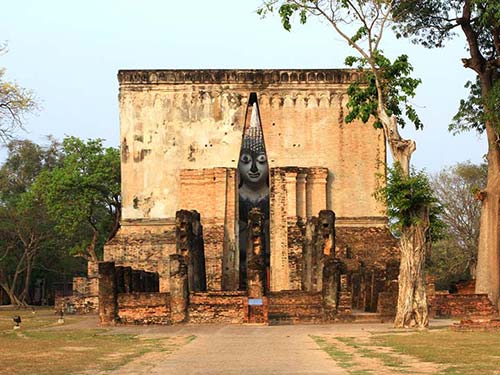
Statues (generally cast in bronze) were created to depict the image of Buddha following his enlightenment. The challenge for artists and craftspeople of the time was to transmit the ethereal quality of this state of Nirvana as opposed to the earthly condition, while simultaneously basing their work on human traits.
And so Buddha is shown in a posture of complete rest, with relaxed muscles, serene facial expression and slight smile: in short, in a state of profound spiritual satisfaction, peace and happiness.
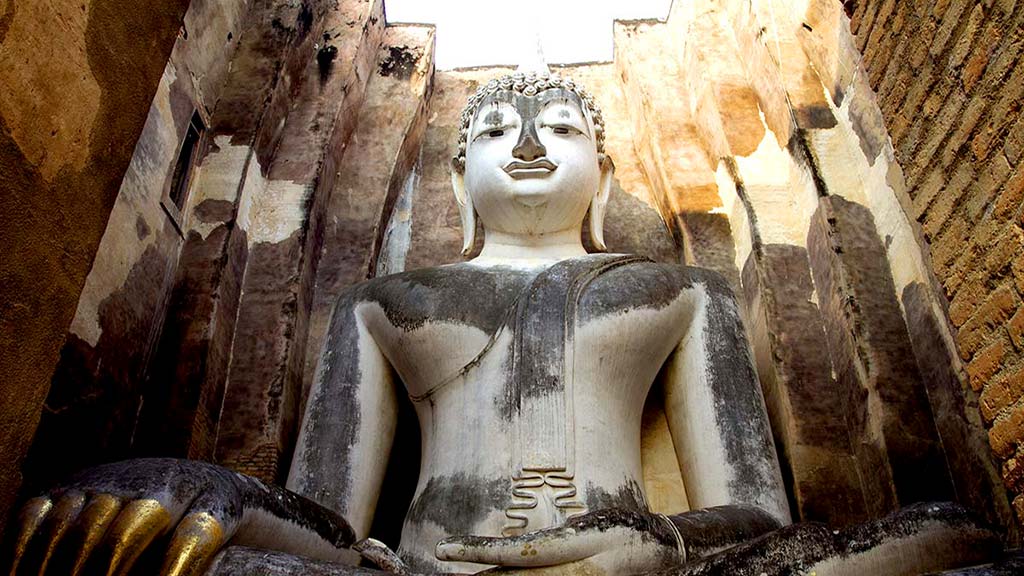
The parallel, delicate, undulating lines of the mouth, the base of the nose, and the eyes emphasize spirituality. These are human forms idealized to express exquisite harmony.
One of the most aesthetically pleasing Buddhas in Thailand is Wat Si Chum, made out of brick and stucco.
Wat Maha That, Wat Si Sawai and Wat Sa Si inside Sukhothai Historical Park
It was King Indratit who began construction on Wat Maha That, the most important Buddhist monastery located next to the ancient royal palace. The monastery was the spiritual centre of the city and the kingdom.
It is surrounded by a brick wall and moat.
King Pho Khun Ram Khamhaeng the Great, the third king of the Sukhothai dynasty, reigned here between 1279 and 1298. He is thought to have created the Thai alphabet and established Theravada Buddhism as the official national religion.
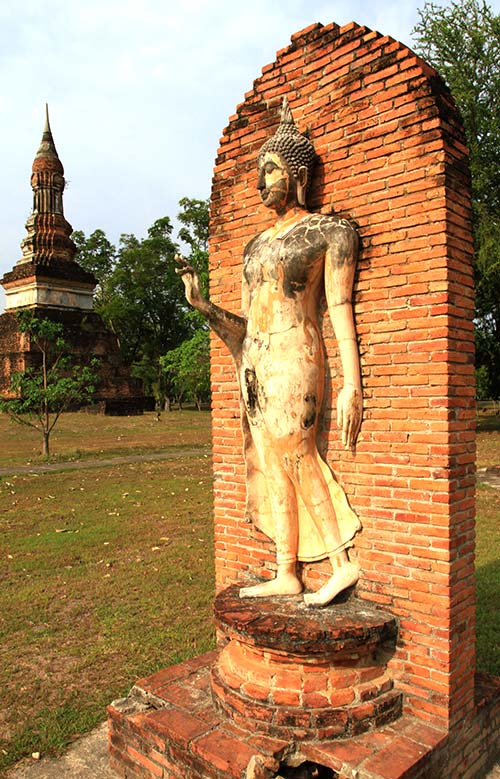
The king increased the royal patronage of Buddhist monasteries and adopted various measures to improve the organization and management of the Sangha or community of monks, by means such as the appointment of a ‘patriarch’ or Sangharaja, who would exercise supreme authority in matters of discipline and knowledge of the Dharma.
The Wat Sa Si, at night, is shown in a photo above.
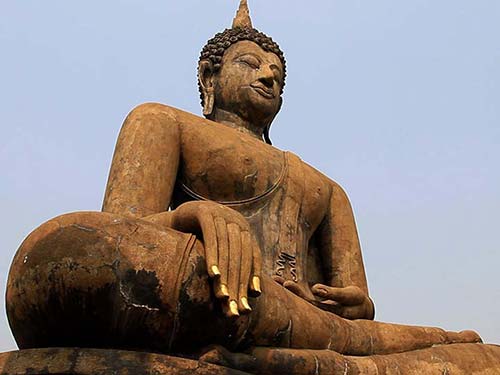
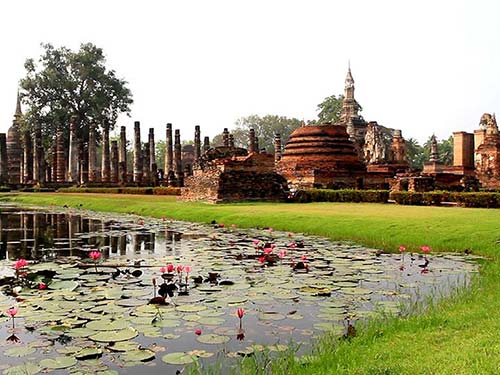
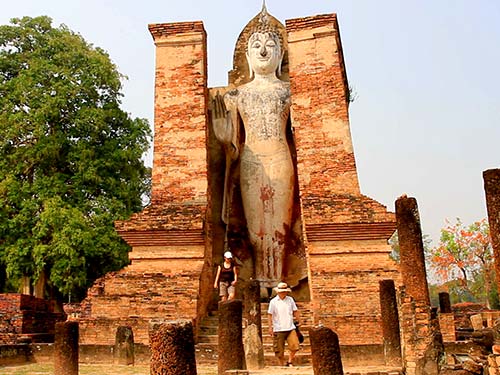
The ruins that remain today include some interesting ‘mondop’ or religious buildings designed to store sacred texts and holy objects such as images of the Buddha.
Here you will also see ‘prangs‘, towers with a religious meaning similar to those found in Khmer temples.
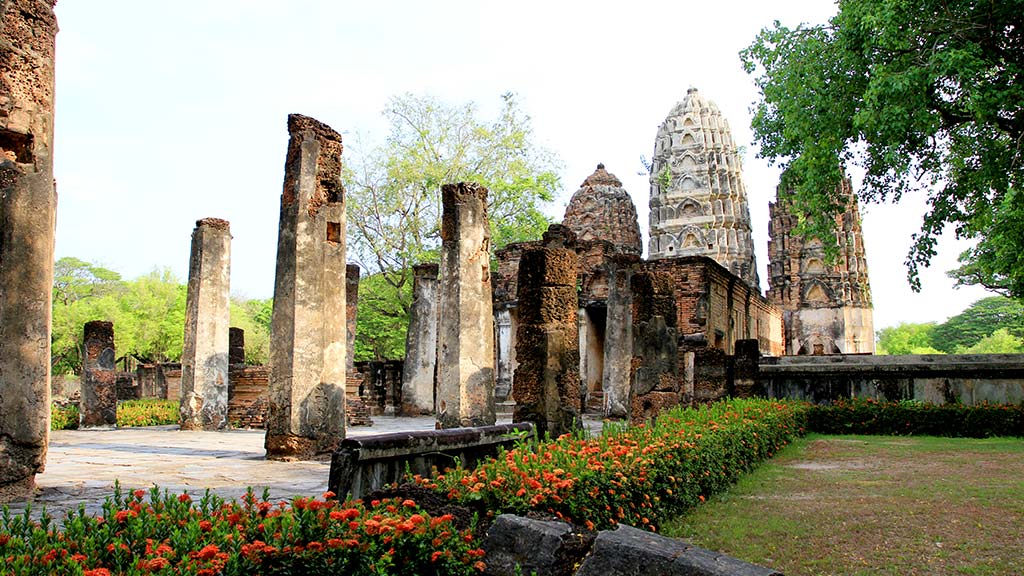
Wat Saphan Hin
The Wat Saphan Hin is located to the west of the temple walls on the crest of a hill that rises 200 metres above the plain.
One of the advantages of the sheer size of this historic park is that visitors naturally spread throughout its numerous temples, preserving the harmony and peacefulness of the site’s sacred ambience.
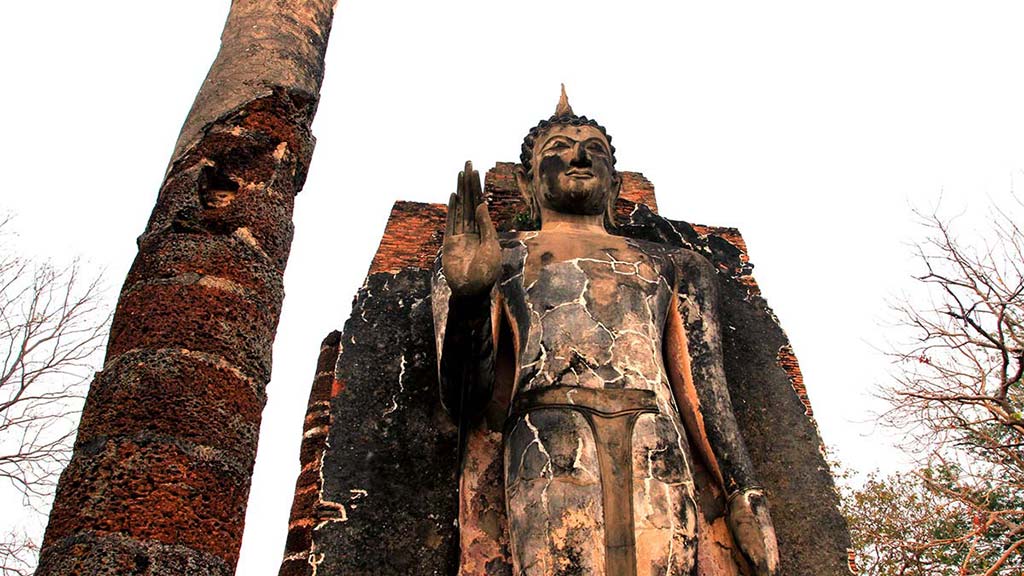
Wat Traphang Thong
The monastery of Trapang Thong is inhabited by monks and houses the holy site of the Buddha’s footprint, which represents the Buddha’s passage on Earth and his legacy to the world. During the first centuries following his death, this was a way of symbolizing the Buddha’s presence before it was expressed in images of his figure.
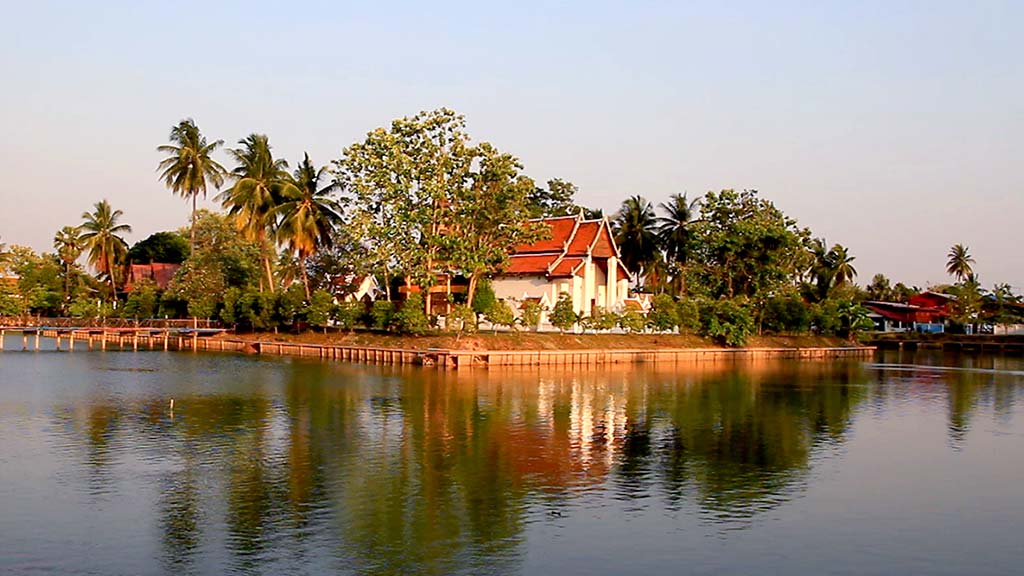
The political supremacy of Sukhothai lasted little more than a century: in fact, the last three kings of the nine that reigned in the kingdom surrendered to the powerful force of the Ayutthaya kingdom. Nevertheless, the dynasty continued to have a cultural influence throughout the following centuries.
At that time it was common for part of the spoils of war or tributes to be paid by serfs to include artists and artisans who would from that moment on work for their new king. This encouraged the spread of artistic and architectural styles and their intermingling.
It is not always easy to fit Sukhothai into tourist itineraries, but it is worth devoting at least one whole day to the historical park, spending the previous night in the city in order to get off to an early start on your tour.